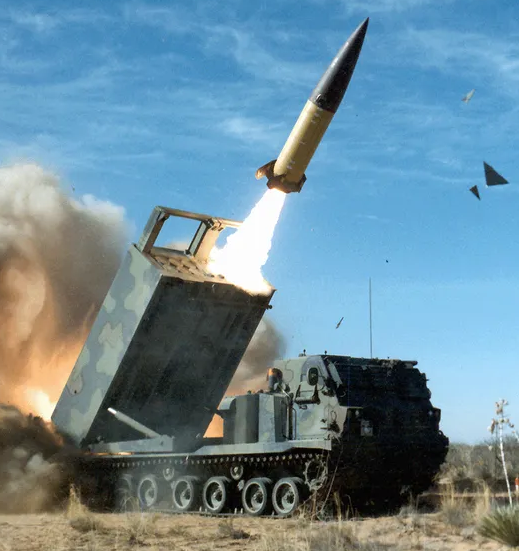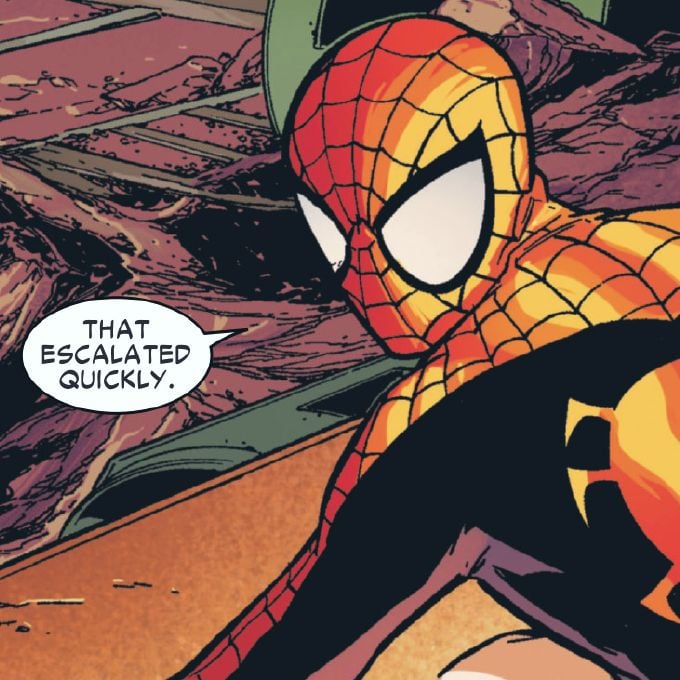Modern AI data centers consume enormous amounts of power, and it looks like they will get even more power-hungry in the coming years as companies like Google, Microsoft, Meta, and OpenAI strive towards artificial general intelligence (AGI). Oracle has already outlined plans to use nuclear power plants for its 1-gigawatt datacenters. It looks like Microsoft plans to do the same as it just inked a deal to restart a nuclear power plant to feed its data centers, reports Bloomberg.
Lol. I just love it how so many people complain that Nuclear doesnt make financial sense, and then the most financially motivated companies just actually figure out that using a nuclear reactor completely privately is best.
Fuck sake, world.
Nuclear safety and penny-pinchers don’t make good bedfellows.
Nuclear safety and
penny-pincherscapitalism don’t make good bedfellows.ftfy. Possibly ironically, nuclear safety and communism (or totalitarianism) don’t work either. It’s odd, innit.
Pretty sure it has to do with how the plant is designed and operated as opposed to what economic or governmental system it happens to exist under.
Doesn’t that design and operation get created by the economic or governmental system it’s under?
I think with the USSR at least, that their reactor designs were supposed to be less safe than western reactor designs.
Was it because they were a shitty oligarchy claiming to be communist? Maybe, they did make a lot of garbage decisions.
I think the US has the record for most nuclear disasters by a lot but two of the worst were in the USSR.
The fact that they want to buy an old nuclear reactor instead of building a new one should be all you need to know to realise that it’s not financially viable.
Have they solved the disposal questions?
Mostly, yes. Use breeder reactors to turn long term radioactive waste to sort term radioactive waste, store for short time and done. The downside: it’s more expensive to move and process the stuff so nobody wants to do that.
Relatively yes. There are disposal sites under construction that are in highly stable and environmentally safe locations. One good thing right now is that radioactive waste is temporarily easily stored. Transport of waste is an issue still, but far less of a problem than transporting oil and oil products.
I’m firmly in the “building new nuclear doesn’t make financial sense” camp, but I do think that extending the life of any existing nuclear plant does. Restarting a previously operational nuclear plant lies somewhere in between.
I think when you start looking at how expensive other forms of green energy are (like wind) long term, nuclear looks really good. Short term, yeah it’s expensive, but we need long term solutions.
I don’t think that math works out, even when looking over the entire 70+ year life cycle of a nuclear reactor. When it costs $35 billion to build two 1MW reactors, even if it will last 70 years, the construction cost being amortized over every year or every megawatt hour generated is still really expensive, especially when accounting for interest.
And it bakes in that huge cost irreversibly up front, so any future improvements will only make the existing plant less competitive. Wind and solar and geothermal and maybe even fusion will get cheaper over time, but a nuclear plant with most of its costs up front can’t. 70 years is a long time to commit to something.
Can you explain how wind and solar get cheaper over time? Especially wind, those blades have to be replaced fairly often and they are expensive.
With nuclear, you’re talking about spending money today in year zero to get a nuclear plant built between years 5-10, and operation from years 11-85.
With solar or wind, you’re talking about spending money today to get generation online in year 1, and then another totally separate decision in year 25, then another in year 50, and then another in year 75.
So the comparison isn’t just 2025 nuclear technology versus 2025 solar technology. It’s also 2025 nuclear versus 2075 solar tech. When comparing that entire 75-year lifespan, you’re competing with technology that hasn’t been invented yet.
Let’s take Commanche Peak, a nuclear plant in Texas that went online in 1990. At that time, solar panels cost about $10 per watt in 2022 dollars. By 2022, the price was down to $0.26 per watt. But Commanche Peak is going to keep operating, and trying to compete with the latest and greatest, for the entire 70+ year lifespan of the nuclear plant. If 1990 nuclear plants aren’t competitive with 2024 solar panels, why do we believe that 2030 nuclear plants will be competitive with 2060 solar panels or wind turbines?
why do we believe that 2030 nuclear plants will be competitive with 2060 solar panels or wind turbines
They have to be competitive with solar panels & grid-scale energy storage costs combined. You can’t leave off 90% of the cost and call it a win. Unless you are fine pairing solar panels with natural gas as we currently do; but that defeats much of the purpose of going carbon-free.
If 1990 nuclear plants aren’t competitive with 2024 solar panels
They aren’t competitive with 2024 solar panels paired with natural gas. But, again, is that really the world you are advocating for?
Unless you are fine pairing solar panels with natural gas as we currently do
Yes, I am, especially since you seem to be intentionally ignoring wind+solar. It’s much cheaper to have a system that is solar+wind+nat gas, and that particular system can handle all the peaking and base needs today, cheaper than nuclear can. So nuclear is more expensive today than that type of combined generation.
In 10 years, when a new nuclear plant designed today might come on line, we’ll probably have enough grid scale storage and demand-shifting technology that we can easily make it through the typical 24-hour cycle, including 10-14 hours of night in most places depending on time of year. Based on the progress we’ve seen between 2019 and 2024, and the projects currently being designed and constructed today, we can expect grid scale storage to plummet in price and dramatically increase in capacity (both in terms of real-time power capacity measured in watts and in terms of total energy storage capacity measured in watt-hours).
In 20 years, we might have sufficient advanced geothermal to where we can have dispatchable carbon-free electricity, plus sufficient large-scale storage and transmission that we’d have the capacity to power entire states even when the weather is bad for solar/wind in that particular place, through overcapacity from elsewhere.
In 30 years, we might have fusion.
With that in mind, are you ready to sign an 80-year mortgage locking in today’s nuclear prices? The economics just don’t work out.
Wind and solar also have to be paired with either cheap natural gas or energy storage systems that are often monstrously expensive. Unfortunately these numbers are almost always left out when one discusses prices.
People do appreciate the lights staying on, after all.
Yeah, we haven’t even gotten into the reliability. The have dead times where no output is created that nuclear doesn’t suffer from.
Personally? I don’t think this is a bad idea. The less they drain from the grid, the less they consume fossil fuel.
The reactor isn’t active right now, and they are a PWR design, and like the 1979 incident showed, they do fail safely.
So long as Microsoft pays for the operation of the plant? Seems reasonable to me if they’re going to consume an assload of energy with or without public support.
Are we eventually gonna get more fusion because billionaires are demanding more energy for their stupid projects?
Sure, knock yourselves out.
Are we eventually gonna get more fusion […]
Either you mean fission, or the “more” could be omitted.
Most likely more fossil fuels because they’re faster and cheaper to roll out.
This is how I’m able to sleep without worrying about death, one of these billionaires has got to be funding research so they can live forever. No guarantee they’ll share but that’s at least a less dread inducing issue.
Yeah, too bad there’s no long-term storage for the waste so it will mean more and more leaks polluting land for centuries since the power companies will just go bankrupt when it’s time to do anything about it like with most forms of pollution.
The amount of waste is tiny. Coal plants cause more radiation than nuclear plants because of tiny amounts of radioactive matter in coal. You need to burn so much coal the amount of radioactivity is higher per unit of energy.
Until we shut down all coal plants we shouldn’t even think about closing nuclear plants
That’s for normal activity and it’s totally irrelevant. So these are some stats about ionizing radiation dosages:
- Average from all sources for an average person for 1 year: 4mSv
- Additional if living within 50 miles of a nuclear reactor for 1 year: 0.09 µSv
- Additional of living within 50 miles of a coal plant for 1 year: 0.3 µSv
- Living within 30 km of Chernobyl before evacuation (10 days): 3-150 mSv
- Maximum allowed dose for radiation workers over 1 year: 50mSv
- 10 minutes next to the Chernobyl reactor after the meltdown: 50Sv
- fatal lifetime dosage beyond our ability to treat: ~8Sv
So, yes, nuclear power plants and storage pools are designed to shield radiation and thus during normal operation release an insignificant amount of radiation so much so that even coal burning releases a heck of a lot more.
But both of those are extremely insignificant if you consider that living near a coal plant will only give you a tiny fraction of additional exposure as the amount of radiation you receive normally from natural sources.
The problem is that with nuclear fission waste, a tiny leak can cause fatal amounts of exposure in a very short time. If a storage pool cracks after the 100 years or so they’re designed to last, or if a flood happens and overflows a storage pool, or a tornado picks up that storage water, or any number of other catastrophic events happen within the 10,000-1,000,000 years before that waste is safe, depending on the type, the people living nearby will likely not survive very long and that area will be contaminated for many times longer than human life has existed.
Fukushima was a good example and had to rely on the vast Pacific ocean to disperse the radiation. Chernobyl will be unsafe for 10s of thousands of years even if the coffin is maintained for all that time.
The radioactivity from the long half-life radionuclides is much less intense.
Radioactive iodine is still dangerous because it can stay in your thyroid gland
https://en.m.wikipedia.org/wiki/Long-lived_fission_product
You can still use newer technology to get rid of the most potent LLFPs, though
Right I only got as far as talking about the ionizing radiation itself not even what happens if the radioation emitting materials themselves escape and so other types of radiation become dangerous through ingestion, not just incidental exposure.
And who is going to pay the trillions of dollars to develop those technologies to reduce the ionizing radiation into a usable product? The energy companies won’t because they’d go bankrupt. And what happened when we left companies to dispose of the waste? They sank it to the bottom of the ocean in barrels that some have since resurfaced. So instead we tried to build a temporary solution by dumping it in a mountain bunker, but that was too costly and we gave up and it’s all just sitting out in the open still in every country with nuclear power. No country has come up with a solution yet and that solution is part of the cost of generating the energy.
So how is nuclear power profitable if it’s exorbitantly expensive to store it indefinitely and exponentially more expensive to develop the technology to make it slightly safer to store indefinitely. And it costs billions and takes decades to decommission a reactor once it’s exceeded its lifespan. Which is why three mile island is still there and containment is still necessary. Again, how is nuclear power cost effective in the long term?
It’s not cost effective, but it’s more green than gas or coal
More green if nothing goes wrong and in the short term. I’m not saying fossil fuels are the answer. I believe they need to be phased out ASAP.
But there are lots of alternatives that are lower cost to build, lower cost to operate, lower cost in case of accidents, and exponentially lower cost to future generations relates to waste storage.
I’m sure that everyone will recognize that this was a great idea in a couple of years when generative LLM AI goes the way of the NFT.
Once operational, the energy generated is cheap and will still be in demand
Nfts were a scam from the start something that has no actual purpose utility or value being given value through hype.
Generative AI is very different. In my honest opinion you have to have your head in the sand if you don’t believe that AI is only going to incrementally improve and expand in capabilities. Just like it has year over year for the last 5 to 10 years. And just like for the last decade it continues to solve more and more real-world problems in increasingly effective manners.
It isn’t just constrained to llms either.
The creators who made the LLM boom said they cannot improve it any more with the current technique due to diminishing returns.
It’s worthless in its current state.
Should be dying out faster imo.
That’s one groups opinion, we still see improving LLMs I’m sure they will continue to improve and be adapted for whatever future use we need them. I mean I personally find them great in their current state for what I use them for
What skin do you have in this game? Leading industry experts, who btw want to SELL IT TO YOU, told you it has hit a ceiling. Why do you refute it so much? Let it die, we will all be better off.
I use them regularly for personal and work projects, they work great at outlining what I need to do in a project as well as identifying oversights in my project. If industry experts are saying this, then why are there still improvements being made, why are they still providing value to people, just because you don’t use them doesn’t mean they aren’t useful.
Maybe you saw the news about a major hit to US Cybersecurity due to morons like you copy-pasting from the GeePeeTee? Or about a wave of falsified research papers generated by AI? Or how a lawyer tried to use an AI assistant resulting in fines and a bar reviewal?
There are always new techniques and improvements. If you look at the current state, we haven’t even had a slowdown
Nah
I suspect you’re right. But there really is never a good way to tell with these kinds of experimental techs. It could be a runaway chain of improvement. Or it is probably even odds that there is a visible and clear decline before it peters out, or just suddenly slams into a beick wall with no warning.
Ironically, the power hungriness of AI might actually do good for the environment if it normalizes nuclear energy.
Quite the twist
This sounds like the intro to a bad post-apocalypse sci-fi movie.
I think pre post-apocalypse is just the apocalypse. If you read the news these days that sounds like a pretty accurate description of the time we’re living in. We’re all just pretending it hasn’t started yet.
Turns out planetary extinction without an asteroid is slow AF.
I had to do a double take to make sure this wasn’t an onion article.
especially since just reading the headline made me cry.
Based on their Windows updates history, this seems like a bad idea. Nuclear boogaloo let’s goooooo
So they fixed the leak?
There is something society could learn about itself if we spent anytime thinking honestly about how much of a dead end it is politically speaking to increase our use of nuclear power as a means of reducing our reliance on fossil fuels. Yet, when big corporate interests want it for their own reasons, it is no big thing and almost no politician will speak ill of it. Even though if some kind of disaster comes about because of it they will be left holding the bag of public opinion since that industry is so heavily regulated.







